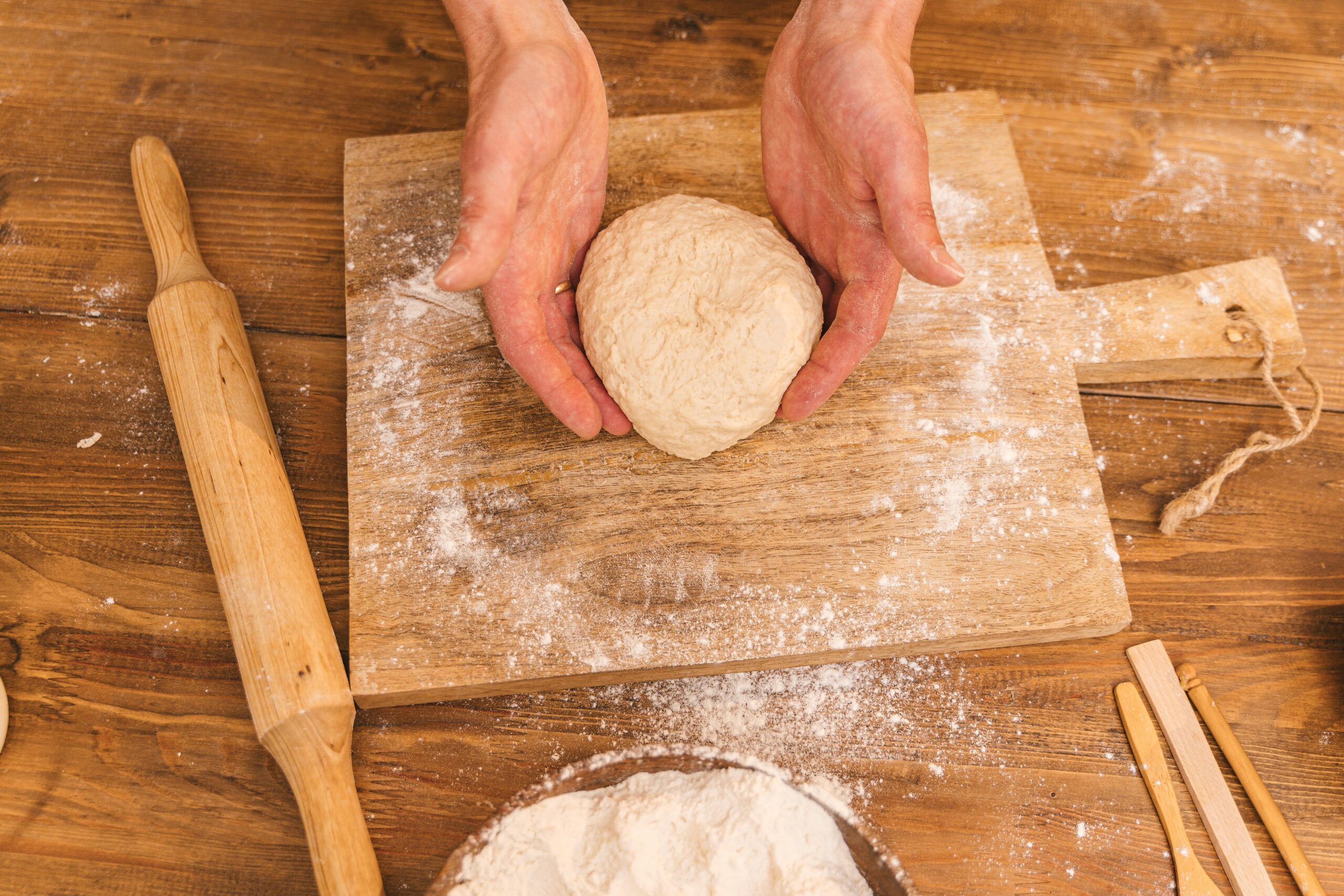There’s something incredibly satisfying about crafting your own pizza dough from scratch. The smell of yeasty dough rising, the feel of it stretching under your fingers, and finally, that first bite into a perfectly baked crust—crispy, chewy, or pillowy-soft, just the way you like it. Whether you’re a beginner or a seasoned home cook, this guide walks you through everything you need to know to make the perfect pizza dough, including the science behind yeast, pro tips, and dough variations.
Ingredients and Measurements
For a classic pizza dough (makes 2 medium pizzas):
- 3 ½ cups (440g) all-purpose flour or bread flour
- 1 cup + 2 tablespoons (270ml) warm water (around 105–110°F / 40–43°C)
- 2 ¼ teaspoons (7g) active dry yeast (1 standard packet)
- 2 teaspoons (10g) sugar
- 2 tablespoons (30ml) olive oil
- 1 ½ teaspoons (9g) salt
The Science Behind Yeast Fermentation
Yeast is a living microorganism that feeds on sugar and starch in your dough, producing carbon dioxide and alcohol in the process. This fermentation helps the dough rise and develop complex flavors. Carbon dioxide creates gas bubbles, causing the dough to expand and become airy, while alcohol adds a slight tang and aroma.
Two Types of Fermentation:
- Bulk Fermentation (first rise): Develops gluten and flavor
- Cold Fermentation (optional second rise in fridge): Slows down fermentation, creating deeper flavors and a chewier texture
Step-by-Step Guide to Making Pizza Dough
1. Activate the Yeast
In a bowl, combine warm water, sugar, and yeast. Let it sit for 5–10 minutes until it becomes foamy. This means the yeast is alive and active.
Tip: If your mixture doesn’t foam, your yeast might be dead. Start over with fresh yeast and check the water temperature.
2. Mix the Dough
Add flour and salt to a large mixing bowl. Make a well in the center and pour in the yeast mixture and olive oil. Stir with a wooden spoon or dough hook until a shaggy dough forms.
3. Knead the Dough
Knead on a lightly floured surface for 8–10 minutes (or use a stand mixer for 5–6 minutes) until the dough is smooth and elastic.
Tip: Use the windowpane test. Stretch a small piece of dough—if you can see light through it without tearing, it’s ready.
4. Let It Rise (Bulk Fermentation)
Form the dough into a ball, coat lightly with oil, and place it in a bowl. Cover with plastic wrap or a damp cloth. Let it rise at room temperature for 1 to 1.5 hours or until doubled in size.
5. Divide and Shape
Punch down the dough to release gas. Divide into two balls for medium pizzas. Let rest for 15 minutes before stretching.
6. Cold Fermentation (Optional)
Wrap dough balls in plastic wrap or store in an airtight container in the refrigerator for up to 72 hours. Bring to room temperature before using.
Tips for Perfect Texture
For Crispy Crust
- Use a pizza stone or steel preheated to 500°F (260°C) for 45 minutes
- Roll the dough thinner and avoid overloading with toppings
- Bake on the lowest rack
For Chewy Crust
- Use bread flour (higher gluten content)
- Cold ferment for 24–48 hours
- Don’t overwork the dough before baking
For Airy & Puffy Crust
- Use high hydration (more water in dough)
- Handle gently during stretching to keep air pockets
- Let dough rest for 20–30 minutes after shaping
Dough Variations
1. Neapolitan Pizza Dough
- 4 cups (500g) 00 flour
- 1 ½ teaspoons (9g) salt
- 1 ½ cups (360ml) water
- 1 teaspoon (3g) dry yeast
Ferment 8–24 hours. Bake at the highest temp (ideally 800°F in a wood oven or use broiler + pizza stone combo)
2. New York-Style Pizza Dough
- 3 ¾ cups (480g) bread flour
- 1 tablespoon (15g) sugar
- 1 ½ teaspoons (9g) salt
- 1 tablespoon (15ml) olive oil
- 1 ¼ cups (300ml) warm water
- 1 teaspoon (3g) yeast
Cold ferment 24–72 hours. Bake at 500°F until golden brown and foldable.
3. Whole Wheat Pizza Dough
- 2 cups (240g) whole wheat flour
- 1 cup (120g) all-purpose flour
- 1 tablespoon (15ml) olive oil
- 1 ½ cups (360ml) warm water
- 2 teaspoons (7g) yeast
- 1 ½ teaspoons (9g) salt
Slightly denser, nuttier flavor. Let it rest longer to soften the bran.
Common Mistakes to Avoid
- Water too hot or too cold can kill or deactivate yeast
- Too much flour makes dough stiff and dry
- Not letting dough rise enough results in dense, flavorless crust
- Skipping rest time after shaping causes shrinkage when stretching
- Overloading with toppings makes crust soggy or undercooked
How to Store Leftover Dough
Refrigerator: Coat with oil, store in a sealed container for up to 3 days
Freezer: Wrap in plastic and a freezer bag. Lasts up to 3 months. Thaw in fridge overnight before use
Tip: Always let refrigerated or frozen dough come to room temp before stretching
The perfect pizza dough isn’t about perfection—it’s about the balance of science, ingredients, and love. Whether you’re after a thin crispy base or a thick airy crust, once you master the dough, the rest of pizza night is a breeze. With this guide in your back pocket, you’re well on your way to becoming your own favorite pizzeria.
Happy baking!

Comments